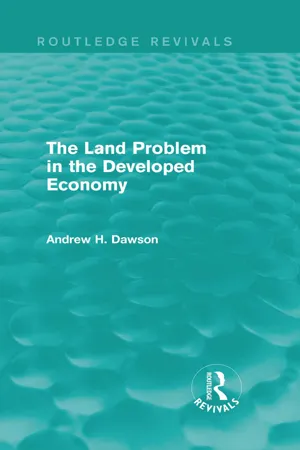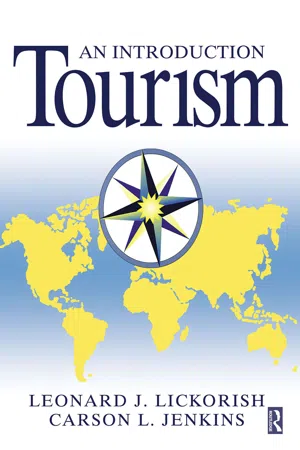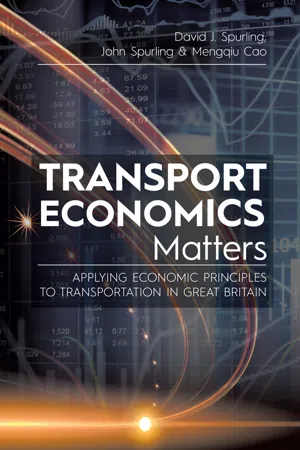Developed Countries
Developed countries are nations with advanced economies, high standards of living, and well-established infrastructure. They typically have high levels of industrialization and technological advancement, along with strong institutions and governance. These countries often have high levels of income per capita and provide a wide range of social services to their citizens.
4 Key excerpts on "Developed Countries"
- eBook - ePub
- Betty Jane Punnett(Author)
- 2017(Publication Date)
- Routledge(Publisher)
...The PRC does not recognize Taiwan as a country, and Taiwan does not currently have a seat at the United Nations. Developing Countries This term is used most commonly at the United Nations to describe a broad range of countries, including those with both high and low per capita national incomes and those that depend heavily on the sale of primary commodities. These countries usually lack an advanced industrial infrastructure as well as advanced educational, health, communications, and transportation facilities. Wikipedia (www.wikipedia.org) says simply, “a developed country is one that has a high income per capita” and “a developing country is a country with a relatively low standard of living.” Although I would not normally recommend Wikipedia as a single source of information, this definition captures the major distinction between the two groups and the distinction that is generally used in this book. The specific measure that is usually used for determining a country’s status is income per capita. Using this measure, income per capita, according to the Economist Intelligence Unit (2016), the twenty-five Developed Countries of the world are: Australia, Austria, Belgium, Canada, Denmark, Finland, France, Germany, Gibraltar, Greece, Iceland, Ireland, Israel, Italy, Japan, Luxembourg, the Netherlands, New Zealand, Norway, Portugal, Spain, Sweden, Switzerland, the United Kingdom, and the United States. All others are classified as emerging markets or transition economies. While income per capita is traditionally used to classify countries as developed or developing, there are limitations to this measure, and it does not capture the quality of life that may be experienced in a particular country. An alternative is the Human Development Index (HDI), which incorporates a variety of additional measures, such as health care, education, and social benefits. By and large, the countries that score high on per capita income also score high on the HDI and vice versa...
- Andrew H. Dawson(Author)
- 2015(Publication Date)
- Routledge(Publisher)
...Secondly, developed economies are, by definition, broadly based. They contain large secondary and tertiary sectors, and do not exhibit any narrow dependence upon primary forms of production. The country-to-town migration is largely complete, and a large proportion of the population lives in, or is in close contact with, the system of urban settlements. Indeed, 'getting out of town' is often more important to inhabitants of the developed economy than seeking 'streets paved with gold'. Thirdly, Developed Countries have high educational and medical standards. Rates of fertility are low, population growth is slow, levels of life expectancy are high, and population pressure on the land, at least insofar as it is directly linked with the threat of starvation, is absent. Table 1.1 : A Listing of Countries accroding to their Degree of Development Each of the 125 countries listed in the Report has been ranked according to those of the three types of characteristics listed above for which information is available for all countries, and a composite index of development has been calculated by summing the scores for each country (Table 1.1). The countries have been divided into groups of twenty-one, so that each group represents one sixth of the countries considered. Those ranked one to twenty-one may be considered to have the 'most-developed economies', and those ranked twenty-two to forty-two the 'next-most-developed' in the world. Inspection of the list reveals the absence of a number of small countries which are not included in the Report. but which might have merited inclusion in the 'most-developed' sextile, such as Iceland and Luxembourg. It also shows that the classification is similar, but not identical, to those produced by some other studies of development...
- eBook - ePub
- Leonard J Lickorish, Carson L Jenkins(Authors)
- 2007(Publication Date)
- Routledge(Publisher)
...However, in Asia there are also very poor countries such as India, Bangladesh and Nepal. In each of the regions of the world, there are relative levels of development which makes the concept of ‘developing countries’ a very broad one. Developing economies are given different titles, e.g. less Developed Countries, developing countries, Third World countries. The latter expression is one which has gained much currency over the years. It is interesting to note how the term is derived. Before the break-up of the former Soviet Union, the world was categorized into three major groups. First, were the developed, market economies, such as those who are members of the OECD. These are the most Developed Countries in the world which have a market economy as the major feature of their development. The second group of countries were members politically or economically of the old Comecom system, based very much on economic and political links with the Soviet Union. These countries tended to be characterized by economic planning based on centralized principles. The third group of countries were those in the developing world; some, e.g. Kenya and Barbados, followed free-market principles of development, whereas others, e.g. Sri Lanka, the Seychelles and Syria, were countries which tended towards more centrally planned economies. It was this third group which were collectively described as the Third World. With the break-up of the former Soviet Union, the term Third World is perhaps no longer appropriate as many of the former Comecom member countries are rapidly dismantling centralized planning and adapting to free-market economies. However, the term Third World is still used and as a broad generalization does describe a group of countries, some very large, e.g. India, Bangladesh and Indonesia, and other very small, e.g...
- eBook - ePub
Transport Economics Matters
Applying Economic Principles to Transportation in Great Britain
- Mengqiu Cao(Author)
- 2019(Publication Date)
- BrownWalker Press(Publisher)
...Chapter 25 Developing Countries I t has become more difficult to define developing countries especially since the Organization of the Petroleum Exporting Countries (OPEC) price rises in 1973–1974. It is perhaps easier to recognise developing countries such as India, Bangladesh and Pakistan rather than to define them. In general, economists think of developing countries as having almost by definition a low income. Some economists, however, distinguish between the newly industrialised countries (NIC) which have fairly high economic growth rates and other developing countries. There is not an adequate definition of a developing country. Most definitions have been based on the Gross National Product (GNP) or Net National Product (NNP) per head. The problem with this measure is that it is more useful where people have similar patterns of lifestyle and expenditure. It is not very useful when economists try to compare a subsistence style economy with one which is specialist. The use of GNP and NNP only refers to absolute levels of incomes measured in terms of a given international currency for example the dollar. This method of measurement has understated the levels of income and development in developing countries. A more useful method of comparing development in different countries is the ‘Purchasing Power Parity’ (PPP) approach as proposed by the World Bank. This measure seeks to capture the actual value gained from different currencies in different countries for a general basket of goods and services. For example, travelling a distance of 60 miles, for example from Canterbury to London will cost £30 whereas travelling the same distance in Kenya, say from Nairobi to Kenol would cost KES150. Assuming the exchange rate is KES130 to £1, so it would cost £1.15, then travelling the same distances in the UK is 26 times more expensive than in Kenya...



